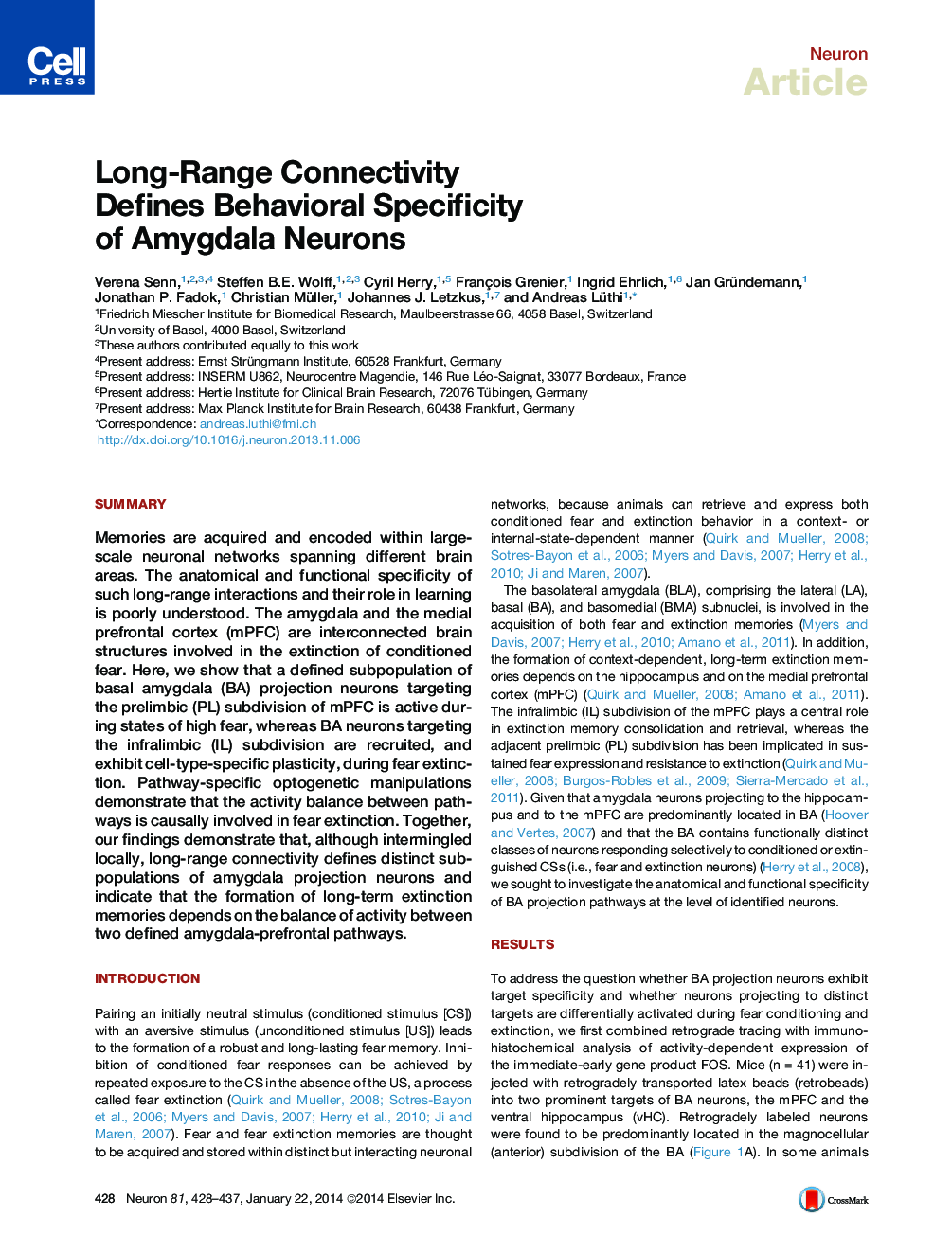| Article ID | Journal | Published Year | Pages | File Type |
|---|---|---|---|---|
| 4321205 | Neuron | 2014 | 10 Pages |
•Fear conditioning and extinction activate distinct populations of BA neurons•Behavioral specificity of optogenetically identified IL- and PL-projecting neurons•Balance of activity between IL- and PL-projecting BA cells regulates fear extinction•Fear conditioning and extinction induce pathway-specific intrinsic plasticity
SummaryMemories are acquired and encoded within large-scale neuronal networks spanning different brain areas. The anatomical and functional specificity of such long-range interactions and their role in learning is poorly understood. The amygdala and the medial prefrontal cortex (mPFC) are interconnected brain structures involved in the extinction of conditioned fear. Here, we show that a defined subpopulation of basal amygdala (BA) projection neurons targeting the prelimbic (PL) subdivision of mPFC is active during states of high fear, whereas BA neurons targeting the infralimbic (IL) subdivision are recruited, and exhibit cell-type-specific plasticity, during fear extinction. Pathway-specific optogenetic manipulations demonstrate that the activity balance between pathways is causally involved in fear extinction. Together, our findings demonstrate that, although intermingled locally, long-range connectivity defines distinct subpopulations of amygdala projection neurons and indicate that the formation of long-term extinction memories depends on the balance of activity between two defined amygdala-prefrontal pathways.
